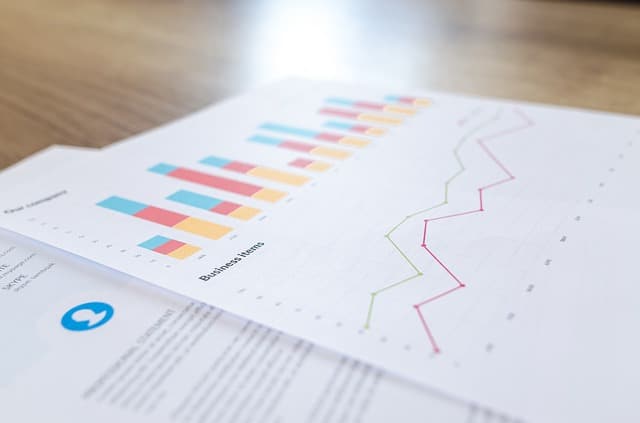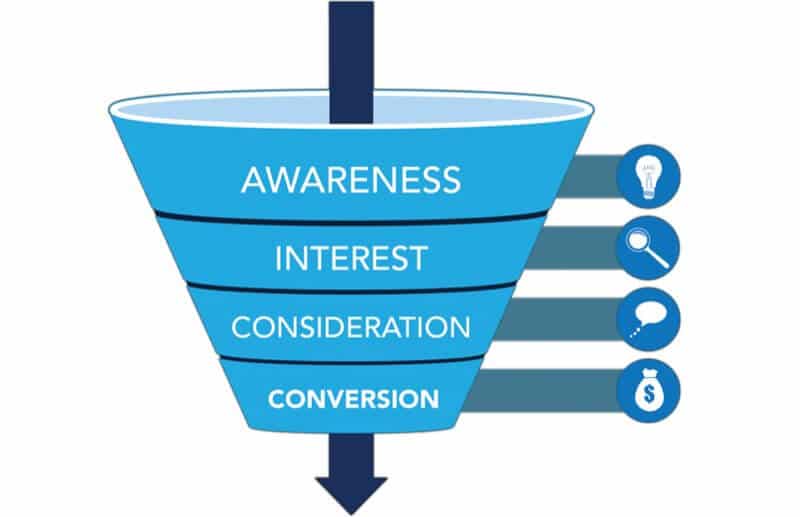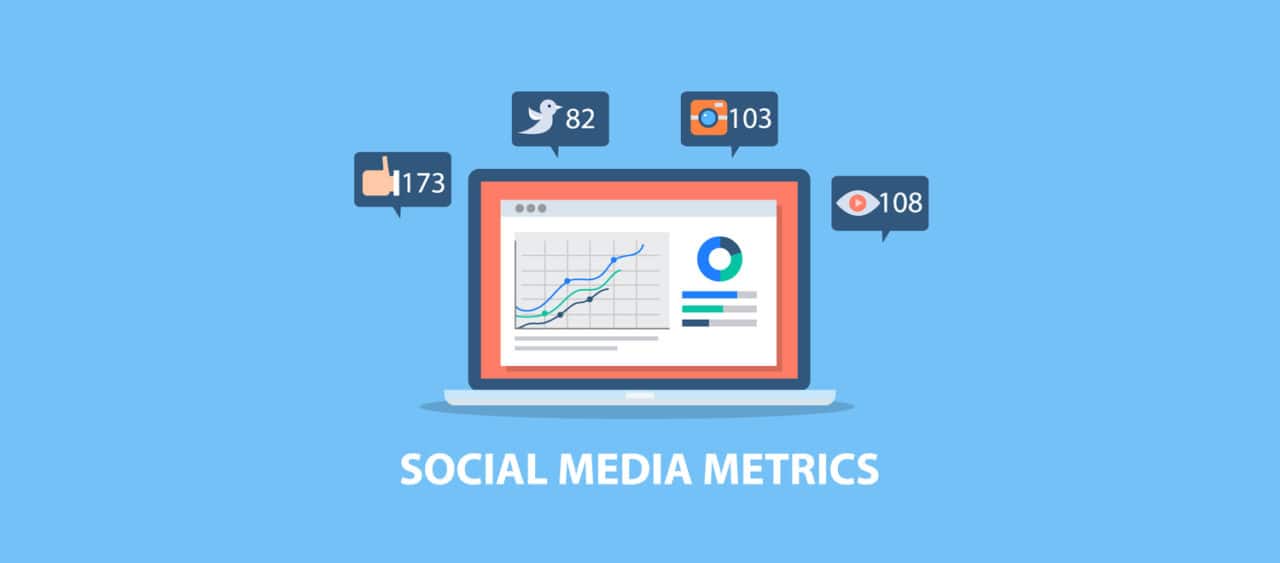-
Oct 17 2019 Important Elements Of A Good Brand Logo
Your brand’s logo is directly linked to your business’ identity – it’s the first visual impression you offer consumers, stakeholders, journalists and more. Logos can evoke powerful emotions, and, when designed right, they can communicate a brand’s true essence. Besides starting out by understanding your target audience’s preferences, how do you really pack so much into one small image? Well, here are seven elements of a great brand logo –
1. Timeless

Trends change with every passing minute. Opt for a logo that is timeless so it doesn’t become obsolete after a few months or years because rebranding is an expensive and time-consuming process. Your logo should have a long shelf-life that’s classy. Dior, Coca-Cola, Jaguar, Target, Apple, Taco Bell, Adidas, Nike, 7-11, Puma, Swarovski and Starbucks are great examples of such logos that have stood the test of time.
2. Simple

Less is more, always. Don’t confuse your audience with too many elements in one tiny logo. In fact, even if you try to go overboard, the truth is half the detailing won’t even be visible on a tiny phone screen. Marie Kondo your logo design. It’ll be more memorable.
3. Adaptable
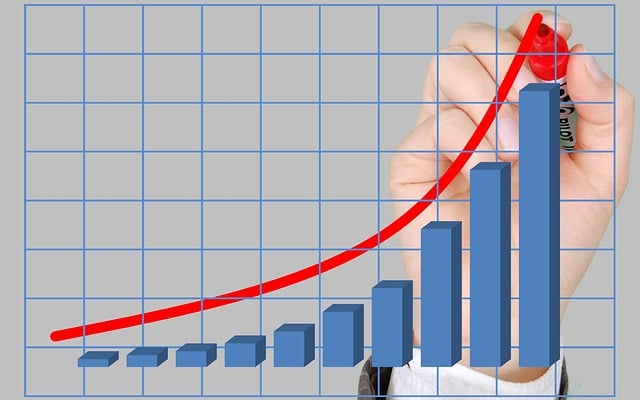 As your brand scales up and your marketing campaigns spread across multiple channels, you’ll need a logo that can be adapted to your Website, brochures, t-shirts, billboards, social media infographics, video clips, business cards, pens, backdrops, standees and more. Your logo should look nice even if it is super large or super small, and should look decent in black-and-white color schemes as well as full color. Select colors and fonts accordingly.
As your brand scales up and your marketing campaigns spread across multiple channels, you’ll need a logo that can be adapted to your Website, brochures, t-shirts, billboards, social media infographics, video clips, business cards, pens, backdrops, standees and more. Your logo should look nice even if it is super large or super small, and should look decent in black-and-white color schemes as well as full color. Select colors and fonts accordingly.4. Unique

Your logo should be distinct – the last thing you’ll want is for consumers to mix up your logo with another brand’s logo that looks very similar. Do enough research to avoid this blunder!5. Typography & Colors

Typography and colors emit a lot of personality and carry certain connotations. Are you looking for font and colors that convey power or nostalgia or fun or feminine appeal or youthfulness? Are the font sizes you’re selecting going to be visible in a small size or from a distance? Are the colors aesthetic? Do they communicate the right values? Will they look good on different color background? Usually, experts recommend avoiding more than 3 colors in one logo. Also, more than 3 colors in a logo will increase production cost when printing. Follow this sound advice!6. Meaningful

Your brand’s logo should be linked to your brand – there should be an interconnected meaning, rather than a sense of disjointedness. Your logo represents your brand’s vision, so make sure they are in sync. Think of tag lines that you want to include with your logo, as well.7. Balanced

Whether your logo is only comprised of text or an icon or both, make sure all the elements are well-balanced and strong. Again, visual appeal is important – remember that. You may want to consider focus testing different logo options on a group of people to understand which one works best.We hope you’re able to develop a powerful logo for your business with this handy checklist. Remember to develop a comprehensive creative brief for your design team to avoid unnecessary back-and-forth and confusion. If you need any help with branding, don’t hesitate to contact our team right here.
Sources-
> www.logomaker.com/blog/2017/10/03/the-5-fundamental-branding-elements-of-logo-design/
> www.crowdspring.com/blog/create-a-successful-logo-with-these-10-essential-elements/
> https://blog.hubspot.com/insiders/logo-design-tips
> www.webdesignerdepot.com/2009/06/12-essential-rules-to-follow-when-designing-a-logo/ -
Jul 15 2019 Don’t Miss These 5 Tips For Improved Social Media Analytics
If you have clear goals for your brand’s social media, it is important to measure campaign success – we call this process social media analytics. One of the best ways to conduct social media analytics in an organized manner is through an Excel spreadsheet – it will enable you to share your findings with your team easily, make real-time edits and convert data into graphs and bar charts quickly. So, what are we waiting for? Let’s take a look at 5 top notch tips to help you assess your social media analytics better! –
Tip 1 – Know Which Social Media Metrics to Measure

In order to measure social media campaign success, you first need to determine which numbers are important to scrutinize – Sales? Site visits? Downloads? Comments? Likes? Tags? DMs? Referrals? UGC? What numbers reflect success? What numbers are average? What numbers are a major red flat? Statistics reveal that conversion rates and engagement are the top 2 metrics to consider, with the former being at 36% and the latter at 35%.
Tip 2 – Identify Changes in Audience Behaviour by Examining Follower Growth

The best way to engage several potential customers and increase traffic is by having a good number of real social media followers. Input the follower count per platform into your Excel sheet so you can track growth every month.
Pro Tip – Cyfe is a popular social media dashboard tool, which helps track and monitor social media data to measure success of various social activities.
Tip 3 – Monitor Brand Engagement Closely

Your followers and impressions are only of use if you get enough engagement out of it. Comments, re-pins and retweets affirm the fact that the content you are sharing is of interest to your followers. Input the number of posts per month by category (i.e. video, contest, JPG, testimonial, blog link, infographic, etc.) and the total number of comments / likes / shares / DMs. Doing so will allow you to find out what sort of content is drawing the best engagement amongst your follower base, so you can plan better editorial content.
Pro Tip – Consider also tracking your competition’s social media performance side-by-side, too, so you know where you really stand in comparison.
Tip 4 – Spot Reach-Related Irregularities by Looking at Impressions

The number of individuals who see your social media updates regularly is collectively known as impressions. Top social networks have such built-in analytics. Record all the impressions in your spreadsheet at set intervals, and also keep a note of each period’s posting frequency. Look for spikes and try to identify what caused it to occur.
Tip 5 – Review Traffic and Clicks Closely
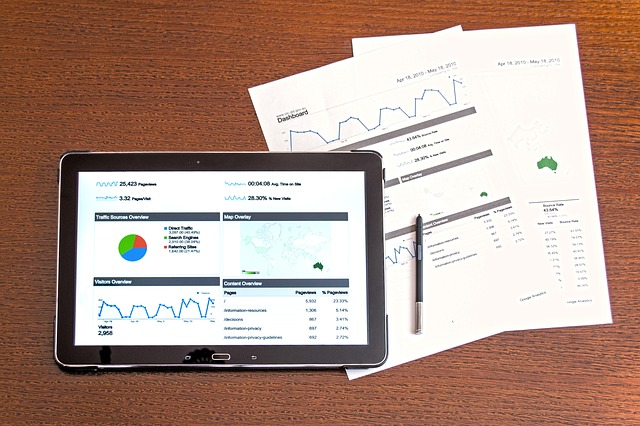
Since clicks influence Web traffic immensely (and, sales, if you’re an e-commerce portal), it is an important metric to observe. Not all clicks result in traffic; but if there is a massive difference between them, it clearly indicates that something is wrong with your site – most probably the loading time. Note the referred traffic on each of your social networks on the excel spreadsheet for better analysis of platforms that are performing well and platforms that aren’t adding any value.
It is also important to pay attention to the sort of audience profile you’re drawing – if your ideal customer base is women between the ages of 30-40, and your analytics reflects traffic of men between the ages of 50-60, clearly there is an issue that needs to be addressed.
We hope these five pointers helps you analyse your social media performance more thoroughly so you can improve future campaigns, accordingly! Make sure you input all the data above accurately. And, if you need any expert help with social media strategy, auditing and analytics, feel free to contact our team right here.
Sources –
> www.socialmediaexaminer.com/10-metrics-to-track-analyzing-social-media-marketing/
> https://blog.hootsuite.com/social-media-analytics/
> www.socialmediaexaminer.com/5-ways-to-analyze-social-media-marketing-performance/
> https://themanifest.com/social-media/how-track-and-understand-social-media-analytics -
Nov 10 2018 Analysing your social media funnel with the right metrics
Social media isn’t just about posting and throwing out information. It’s also about using the insights into your audience in the best possible way. All this is possible through social media analytics. (We spoke earlier about the numbers that matter to your business. But how do these numbers affect your social media funnel)

via bufferapp.com
Each platform has its own simplified analysis of your page such as Facebook insights, Instagram insights and so on. You can further opt for one of the several paid, analytical tools to get a more detailed report of your audience. But if you don’t know what to look at and what metric is important to you, then the whole point of the exercise goes to waste.
To get a better understanding of this, you in-turn try to figure out of where you are in your social sales funnel.

Every layer – awareness, consideration & conversion, has its own KPIs (key point indicators) that matter.
1) Awareness Stage
This is where you are trying to create your brand value or establish your market. At this stage, you are still new and your focus at the moment is to reach as many people as possible, giving them precise information through your social media channels.

The KPIs that matter during this stage are reach, impressions, shares, mentions, links, audience growth rate.
2) Consideration Stage
Now you have started building your audience. The next step to take is to engage your audience and keep them occupied through your content. Giving them solution-based content and calls-to-action is a pathway to opt for. With call-to-actions, customers who are now considering your brand will get that extra nudge towards reaching the ultimate step, conversion, to being a customer for your brand.

via www.ethos3.com
Metrics such as post likes, comments, shares, saved, average engagement rate, video views, lead rates work as your biggest indicators for the same.
3) Conversion Stage
With a social media funnel, you have successfully made an approach to achieve what you set out for. Your audience is not just committed to respond on the content you offer but has now become a customer to your brand.

via idunn.pro
Conversion rate, CTR (click-through rate), bounce rate, customer lifetime value, CPA (cost per action), CPM (cost per mille), CPC (cost per click) are the ever-so-important yardsticks that will signify the success rate of your strategies and campaigns and eventually your brand.
Module for your content can be flexible depending on the study of your metrics but taking this pathway will make it easier to turn an audience into loyal customers.
-
Nov 06 2018 Social Media Metrics: Numbers that matter
Picture this: You are a brand with an interactive Facebook page, Instagram profile, and an active Twitter account. But all of this isn’t translating into the business you’re looking for. How do you design a campaign to make the numbers, that are the most important, go higher? What are those hints you should be looking at, to strategize further?
Social Media Metrics
Metrics are details such as followers, reach, likes, views, retweets, shares, etc; these numbers are our data that helps gauge the impact our social media pages and campaigns have on the company and eventually, on our brand value and revenue.
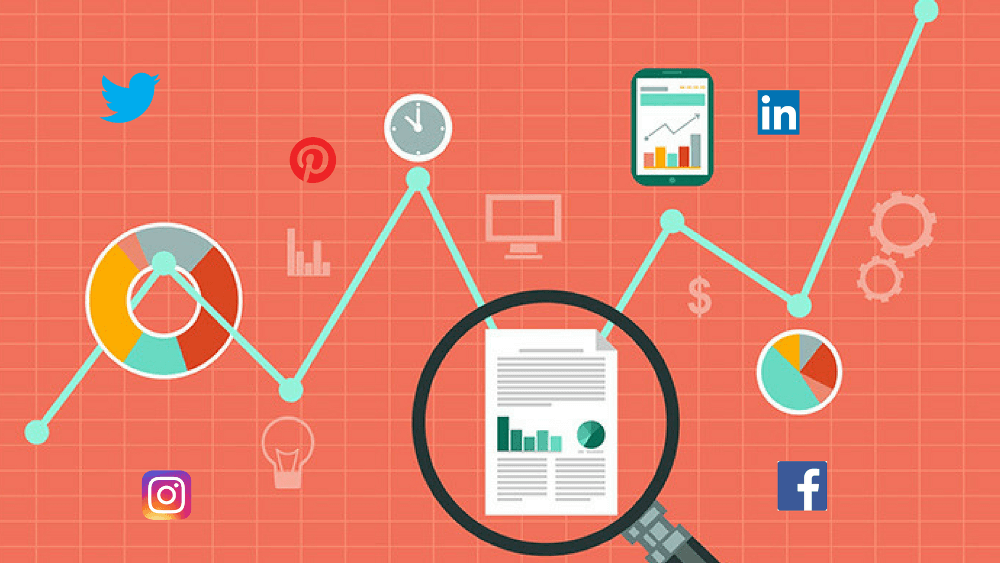
via reportgarden.com
Social media metrics help us to divulge deeper in these everyday numbers, become high indicators of our business reach, impact and success as well as help us design our strategies and campaigns for the future.
What are the metrics we can use?
1. Reach & Impressions
While going through your social media profiles, you must have come across words like reach & impressions. Impressions tell you how many times have people come across your post on their timeline, organically. But it isn’t the strongest indicator as your post can be seen by the same account multiple times, and it still counts as a new impression each time. Reach is the index that tells you how many times a unique profile has come across your content. Together, reach & impressions play a crucial part in understanding the overall pattern as well as the quality of your content.

via squarespace.com
When starting a new business, reach metrics is the most important to you. Higher reach ensures that your content is viewed by a new set of people every day, which results in a growing audience.
2. Audience Growth:
Content consumption through the right audience is one of the initial focus of every social media profile. Not just any audience that checks on your profile once-in-a-while but an audience that is loyal and keeps returning to your profile regularly is what every brand looks for.

Keeping track of this metric helps you to understand at what stage or campaign have you received the highest audience and can repeat similar campaigns to continue growing.
3. Engagement Rate:
Engagement rate is influenced by the total likes, comments, and shares. The total engagement divided by your page audience gives you your engagement rate. Observing these figures, points to the number of the actual audience that is interested in your brand and has a higher potential to convert into a brand loyalist and ultimately, a customer.
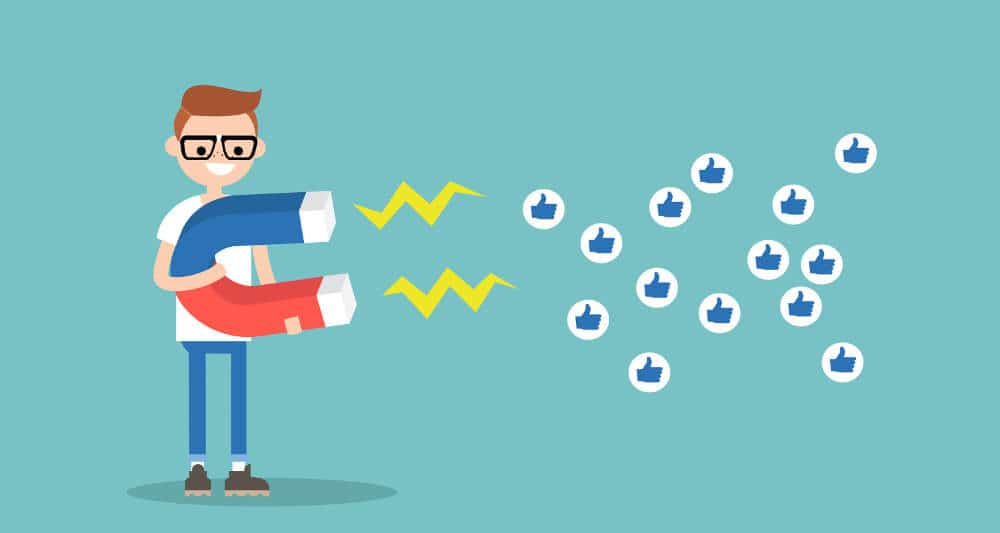
Percentage – increase or decrease in your engagements can help you fine-tune your strategies and move ahead.
4. Conversion rate:
Every brand has a purpose, which is sales, and conversion rates are indices of how much of that traffic has converted into sales. Where bringing all the traffic, amidst battling changing algorithms is important, the most important factor for any brand is conversions. Conversion rate breaks down how much sales have been recorded against the traffic that has viewed & engaged with your profile.
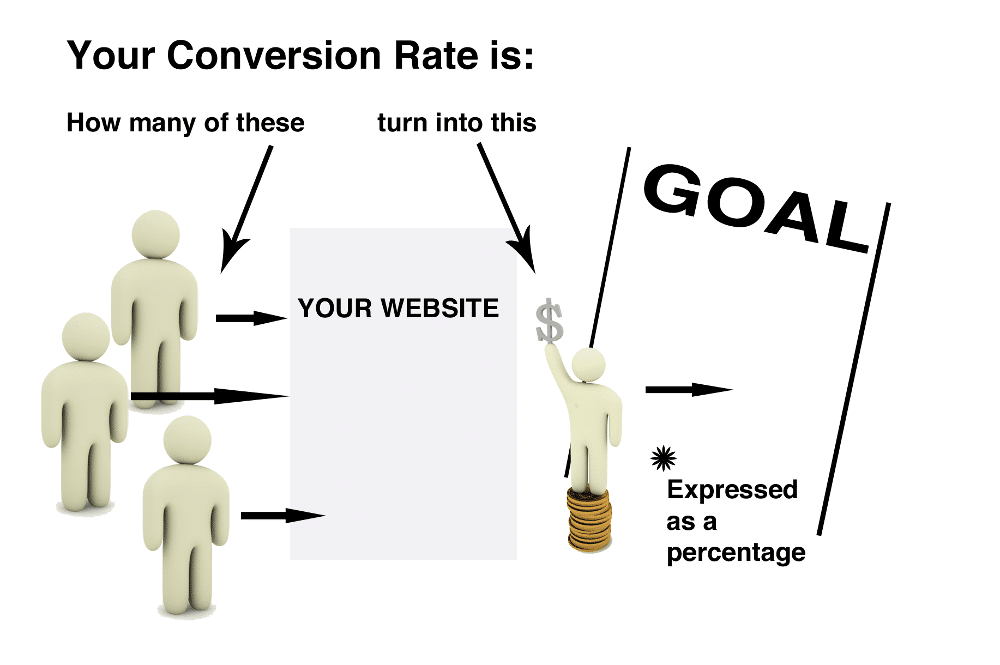
via neilpatel.com
If your number is higher, means your audience is getting what they came for on your landing page. But lower conversion rate means you need to work on the landing page and also ensure that the right message is being provided beforehand.
5. Share of Voice:
Knowing your own metrics is great, but with thousands of brands competing in the same space, how do you know your brand position? With share of voice, you compare the number of mentions in correlation to your competitors. By knowing this number, you may adopt strategies that your competitor has used and create a bigger & better campaign.
Social media metrics are your step-by-step guide to making your brand successful. It also helps to plan your campaigns with the in-hand knowledge of data and make them more precise, keeping track of these tools and using them to your advantage will pose to be the slight difference in the massive success of your campaign.


